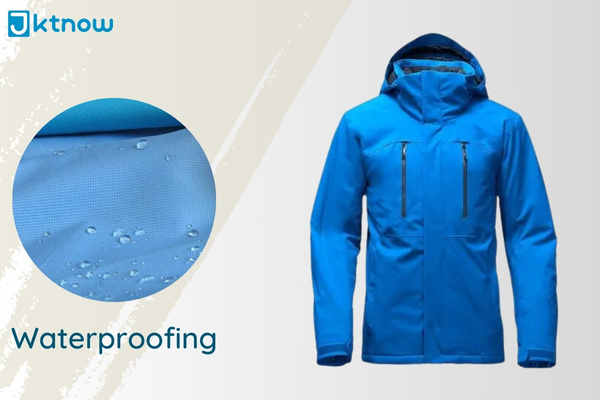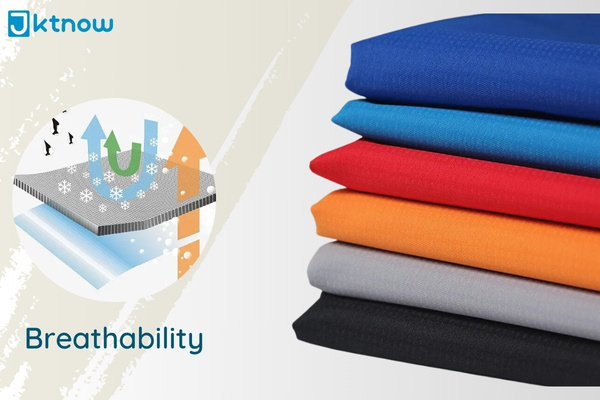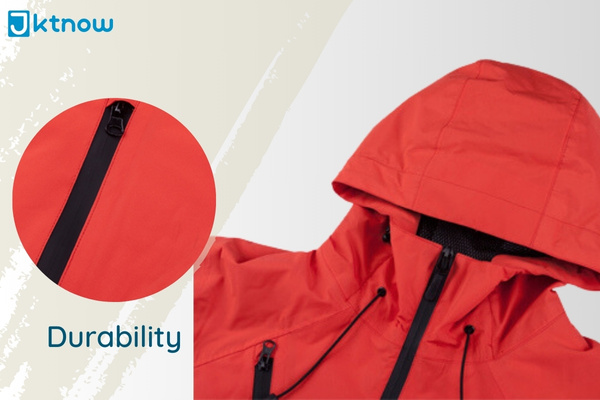Hey there, fellow snow enthusiast! If you’re gearing up for exciting skiing adventures, you know a good ski jacket is your ultimate companion on the slopes. So many ski and snowboard jackets on the market that it can be hard to sort through them all. With types of ski jackets, how do you find the right one? No worries, I’ve got you covered. There are some factors to consider when buying ski jackets.
In this ski jacket buying guide, I’ll list the five essential factors to consider when buying ski jackets and ski pants that will help you choose a ski jacket. So, let’s dive right in and ensure you’re snug and stylish as you carve down those powdery slopes!
Ski Jacket Insulation: Staying Warmth in Harsh Conditions
Insulation is the first factor to consider when buying ski jackets. When you’re venturing into the breathtaking world of skiing, one thing is sure: the cold can be unforgiving. That’s where the magic of insulation comes into play, wrapping you in a cocoon of warmth amidst the icy wilderness.
Insulation is like a secret layer of comfort that ensures your body’s heat stays trapped, keeping you snug and cozy as you brave the elements. It’s the technology that stands between you and the chilly winds, allowing you to fully immerse yourself in the joy of skiing without worrying about shivers running down your spine. Insulation is generally measured in grams per square meter. The higher the number, the more insulation there will be, and the warmer it will keep you. Some manufacturers vary insulation weight through the jacket.
When choosing the ideal ski jacket insulation, you’ll encounter two primary options: down and synthetic. Down insulation, often derived from the soft under feathers of ducks or geese, is renowned for its exceptional warmth-to-weight ratio. Imagine being wrapped in a cloud of warmth that doesn’t weigh you down – that’s the beauty of down insulation.

On the other hand, synthetic insulation shines when handling wet conditions. Unlike down, which tends to lose its insulating properties when damp, synthetic fibers retain their warmth even when they encounter snowflakes-turned-melted-droplets.
Your choice between these two types of insulation largely depends on your skiing style, the weather conditions you’ll be facing, and your personal preferences. If you’re heading into frigid terrains where warmth is of the essence, down might be your go-to option. Conversely, synthetic insulation might be the superhero you need if your adventures involve encounters with wet snow or unpredictable weather.
Several features on most ski jackets help to enhance their weather resistance and, thus, their overall comfort. A powder skirt is one feature that seals the bottom of the jacket, keeping snow and wind out. Some windproof powder skirts are fixed to the jacket permanently, others can be removed to suit your needs or preference, and some jackets have no powder skirts.
So, before you embark on your next skiing escapade, remember the power of insulation. For example, shell jackets, aka uninsulated jackets, are a common type of ski and snowboard coat because they’re versatile and give you the most control over your level of warmth. Choosing between these types, like a 3-in-1 ski jacket, softshell jacket, hardshell jacket, and more, will be based on your natural body temperature.
If you are a person who is generally cold, then investing in an insulated jacket is the pick. Conversely, the shell jacket suits you if you ski or snowboard in generally warmer climates or are predisposed to feeling hot.
Ski Jacket Waterproofing: Keeping Dry in Wet Conditions
Waterproof is the second factor to consider when buying ski jackets. When you’re out in the snow, encountering moisture is inevitable – from powdery snowflakes to occasional spills. It is where your ski jacket’s waterproofing prowess becomes your best friend. It’s not just about staying dry; it’s about staying warm, comfortable, and focused on carving your path down the mountain.
When the weather turns cold, insulated jackets are your go-to (ensure that the jacket’s outer shell is fully waterproof). An insulated ski jacket is the warmest as it has a layer of down or synthetic insulation built into the outer shell. This insulated lining traps body heat, so you don’t have to add layers.
Insulation can eliminate the need to layer but can cause you to get hot on warmer days. The outer part of insulated ski jackets tends to be waterproof or water-repellent.

Modern ski jackets employ advanced technologies to keep water at bay. These features, from waterproof membranes to sealed seams and water-resistant zippers, create an impenetrable barrier against moisture. The result? Knowing you’re shielded from the elements, you can confidently embrace every snowfall.
The beauty of waterproof ski jackets lies in their functional benefits and ability to enhance your overall experience on the slopes. You’ll no longer be shivering and uncomfortable, trying to make the best of a soggy situation. Instead, you’ll be gliding down the mountain, fully immersed in the joy of skiing without a care about the weather outside.
Remember that not all waterproofing is created equal when purchasing a ski jacket. Look for jackets with reputable waterproof technology, such as GORE-TEX, renowned for its exceptional performance. Additionally, pay attention to the details like waterproof zippers and adjustable cuffs that further enhance the jacket’s ability to keep water out.
Ski Jacket Breathability: Regulating Heat and Moisture
Breathability is the third factor to consider when buying ski jackets. Keeping your body temperature in check when conquering the slopes is essential for a comfortable and enjoyable experience. It is where the often underestimated factor of breathability comes into play. Imagine the scenario: you’re cruising down the mountain, exerting yourself, and generating heat. Without proper breathability in your ski jacket, this heat gets trapped, leading to an uncomfortable and sweaty situation. Nobody wants that!
Breathability refers to the jacket’s ability to escape excess heat and moisture, preventing that clammy feeling and keeping you dry from the inside out. Think of it as your jacket’s way of letting your skin breathe. High-quality ski jackets incorporate breathable membranes that balance retaining warmth and wicking away moisture. It means you won’t get soaked even when sweating on the slopes.

Why is this important? Aside from the obvious discomfort, excess moisture can make you feel colder in the long run. As you slow down or take a break, that dampness can chill your body, affecting your overall body temperature and comfort. A breathable ski jacket helps you maintain a comfortable body temperature throughout your skiing adventure, whether gliding down the mountain or pausing to enjoy the stunning views.
So when shopping for ski jackets, watch for features that enhance breathability. Look for jackets with strategically placed vents that you can open when you need extra airflow. Additionally, consider the type of activities you’ll be doing – if you’re a more aggressive skier or tend to work up a sweat quickly, opting for a jacket with higher breathability could significantly enhance your comfort level.
Ski Jacket Fit and Mobility: Ensuring Comfort and Flexibility
Fit is the fourth factor to consider when buying ski jackets. Nothing should hold you back from carving those perfect turns and mastering those gravity-defying jumps when you’re out on the slopes. That’s where the often underestimated factor of fit and mobility comes into play.
So, what’s the secret behind finding that perfect fit? It’s all about striking a balance between snugness and freedom. A ski jacket that’s too tight can restrict your movements and cramp your style, while one that’s too loose might not provide the necessary warmth and protection. You want a fit that allows easy and unrestricted movement, letting you twist, turn, and jump quickly.
When trying on a ski jacket, consider the layers you’ll be wearing underneath. A well-fitted jacket should comfortably accommodate your base layers and mid-layers without feeling constricting. Make sure the sleeves are long enough to cover your wrists even when you’re reaching forward, and the hem should fall at your hips to prevent snow from sneaking in.
It’s also worth considering the jacket’s design elements that contribute to mobility. Articulated sleeves, underarm vents, and a well-designed hood enhance your ability to move naturally while keeping you comfortable. When trying on a jacket, don’t be afraid to mimic skiing movements – raise your arms, bend down, and twist side to side. You’ve found a winner if the jacket moves with you without pulling or bunching.
Remember, your ski jacket should be your ally, not a hindrance. So, before you make that final decision, take a moment to ensure your chosen jacket offers the fit and mobility that’ll let you conquer the mountain with confidence. After all, skiing isn’t just about the destination; it’s about the exhilarating journey you take to get there.
Ski Jacket Durability: Investing in Long-lasting Gear
Durability is the fifth factor to consider when buying ski jackets. When it comes to skiing, your gear needs to be as challenging as you are. That’s where durability comes into play – it’s not just a bonus. It’s a necessity. Think of your ski jacket as a trusty companion that’ll weather every twist, turn, and tumble on the slopes.
Investing in a long-lasting ski jacket is like committing to seasons of adventures. You want a jacket that can handle the rough and tumble of skiing – the occasional tree branch scrape, the accidental chair lift encounter, and the unavoidable ski edge contact. It is where the quality of materials comes into play.

Watch for reinforced seams and robust zippers when scouting for a durable ski jacket. High-quality materials, like ripstop fabrics and technical textiles, add another layer of assurance. These materials resist tears and abrasions, so you can glide through your ski days without worry.
Remember, durability isn’t just about surviving a single season; it’s about gearing up for countless ski adventures. A well-made ski jacket can stand the test of time and look good as new after every adventure.
When you invest in a durable ski jacket, you’re not just buying an article of clothing – you’re investing in the longevity of your skiing experiences. So, seek that durability and prepare to make memories on the slopes without worrying about your gear.
Conclusion
So, there you have it – the five essential factors to consider when buying ski jackets. Remember, your ski jacket isn’t just a piece of clothing; it’s your ally against the elements. Remember these factors when buying a ski jacket; you’ll be ready to hit the slopes in style and comfort. Happy skiing!
Get High-Quality Custom Ski Jackets From Jktnow!
Ready to hit the slopes in style and comfort? Look no further! As a leading professional ski jacket manufacturer and wholesaler based in China, we’ve got you covered. Our extensive range of ski clothes offers the perfect blend of functionality, durability, and fashion-forward design. Whether you’re seeking custom designs, personalized logos, or specific material preferences, our services have you in mind.
We understand the importance of the five essential factors discussed in this blog when buying the perfect ski jacket. That’s why we’re committed to delivering top-notch products that tick all the boxes without breaking the bank. Contact Jktnow today to explore our affordable options and elevate your skiing experience to a new level. Your adventure begins with the right gear – and we’re here to make it happen.
Frequently Asked Questions
Q1: What’s the difference between down and synthetic insulation?
Down insulation, often sourced from ducks or geese, offers a remarkable warmth-to-weight ratio, making it a go-to choice for cold conditions. On the other hand, synthetic insulation, made from man-made materials, shines when wet, retaining its insulating properties even in damp environments. The jackets will keep you warm.
A more detailed discussion on the pros and cons of different insulation types can be found in our Down Jacket Buying Advice. Generally, more insulation will be warmer than less of the same kind.
The choice between down and synthetic insulation depends on your skiing style, weather conditions, and personal preferences. Down provides superior warmth and compressibility, perfect for frigid days, while synthetic insulation is a reliable option for wetter climates.
Q2: How can I tell if a jacket is waterproof?
Worry not; deciphering waterproof jackets is easier than you think. Look for high-tech features like sealed seams and waterproof zippers. Also, pay attention to waterproof ratings or advanced technologies like GORE-TEX. These indicators ensure you stay dry no matter the weather, making your outdoor adventures truly enjoyable.
Q3: Can I use my ski jacket for other winter activities?
Absolutely! Your ski jacket isn’t just limited to the slopes. It’s a versatile companion that can handle various winter activities with ease. Whether snowboarding, hiking, or simply braving the cold on a winter stroll, your ski jacket’s insulation, waterproofing, and durability make it an ideal choice. Embrace the comfort and style of your jacket beyond the slopes and let it accompany you through all your cold-weather adventures.
Q4: Should my ski jacket fit snugly or loosely?
Getting the fit right for your ski jacket is crucial for a comfortable and unrestricted experience on the slopes. Aim for a snug yet comfortable fit that allows freedom of movement. You want enough room for layering without feeling restricted. Remember, your ski jacket is your companion on the mountain, so finding that perfect balance ensures you’ll easily glide through your skiing adventures.
Q5: How do I ensure my ski jacket lasts for multiple seasons?
Your ski jacket is more than just a piece of clothing; it’s a companion through your snowy adventures. Proper care is vital to ensure it stands the test of time. Follow our manufacturer’s cleaning instructions in the letter. Regularly wash away sweat, dirt, and grime, and avoid using harsh detergents that could damage the fabric.
Don’t just toss your jacket into the closet when the season ends. Store it in a cool, dry place, away from direct sunlight and moisture. Hanging it on a padded hanger is an excellent option to maintain its shape. And remember, your ski jacket might be challenging, but it’s not invincible – avoid using it for non-skiing activities that could cause unnecessary wear and tear.
Treating your ski jacket carefully and respectfully will ensure it remains your faithful companion for many winters.

